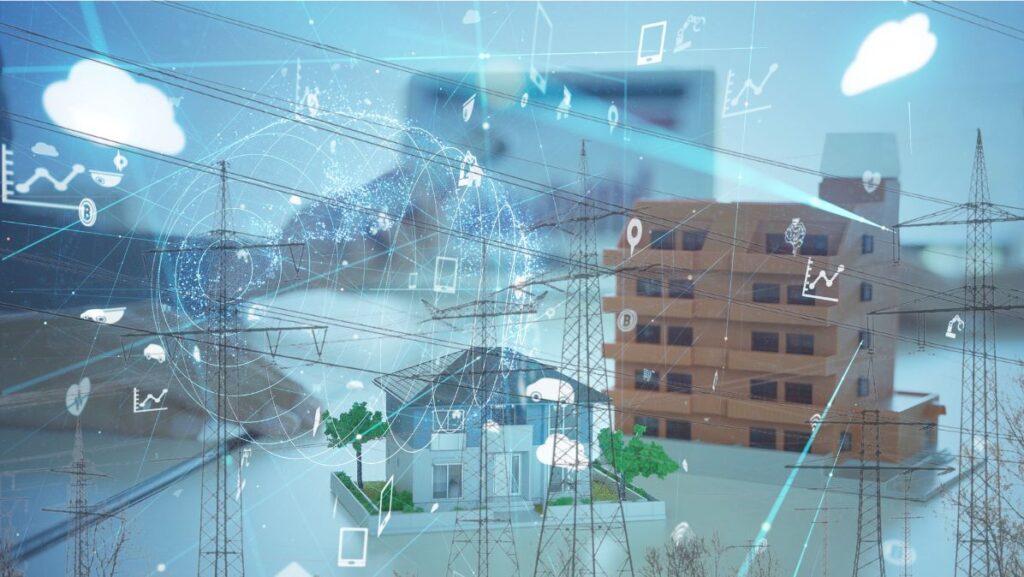Understanding Dirty Electricity and Electromagnetic Fields: Key Safety Tips
Given the ongoing debate about the health risks associated with EMF exposure and dirty electricity, it’s necessary to be informed about these issues. EMF stands for “Electromagnetic Field.” It refers to the invisible fields of energy associated with electrically charged objects. EMFs and dirty electricity are often invisible and originate from everyday sources like electrical wiring, household appliances, wireless devices and networks, and power lines. While the full extent of their impact on our health is still being studied, there’s enough concern to pay attention.
As our understanding of these effects evolves—similar to how we gradually learned about the risks of certain chemicals and pollutants—it’s wise to stay ahead of the curve. Educating ourselves now allows us to make informed decisions about how we live and what we expose ourselves to. Taking precautionary measures, such as reducing unnecessary exposure to EMFs and cleaning up our electrical environments, is a proactive way to protect our health, even before all the evidence is in.
Additionally, discover trusted brands that offer EMF protection and indoor air quality solutions here.
Each brand we feature is carefully selected to support your journey toward healthier living spaces. Through our affiliate partnerships with Amazon and other trusted brands, we provide easy access to products, allowing us to earn a small commission at no extra cost to you. These resources are designed to connect you with clean, eco-friendly products better for your health & the environment.
EMF Sources:
Both power lines and household appliances contribute significantly to electromagnetic field (EMF) exposure. Additionally, the rise of wireless technology has introduced new sources like cell phones, smart meters, and Bluetooth devices.
- Power lines
- Wireless devices (cell phones, routers, smart meters, Bluetooth)
- Household appliances (microwaves, ovens, refrigerators)
- Electronic devices (computers, TVs, etc.)
- Dirty electricity (from various electronic devices)
Dirty Electricity Sources:
Dirty electricity, caused by electrical current fluctuations, is often generated by electronic devices like computers, TVs, and power supplies. Even though it’s a less commonly discussed issue, it can contribute to overall exposure to EMFs. These devices are common culprits for creating “dirty electricity”:
- Computers and laptops
- Televisions and entertainment systems
- Variable-speed motors (appliances, HVAC)
- Switch-mode power supplies (electronics, chargers)
- Uninterruptible Power Supplies (UPS)
- Energy-efficient appliances
- Smart meters
What is the Difference?
- EMFs are invisible fields of energy produced by electrical devices.
- Dirty electricity is a specific type of EMF that is caused by fluctuations in the electrical current.
Think of EMFs as the overall term for all electrical fields, while dirty electricity is a particular kind of “messy” electrical energy.
Possible Health Concerns Related to EMFs and Dirty Electricity
Despite the lack of conclusive evidence, some health concerns have been linked to EMF exposure and dirty electricity. It may be beneficial to minimize exposure as a precaution to promote a calmer and healthier environment.
EMFs (Electromagnetic Fields):
- Potential disruption of the body’s natural biological processes.
- Weakened immunity
- Negative impact on sleep quality
- Possible adverse effects on the nervous system
- Concerns about infertility and reproductive issues
- Potential developmental effects in children
- Chronic headaches, Fatigue, Stress
- Tingling skin sensations
- Conditions like autism, ADHD, and asthma, especially in children.
Dirty Electricity:
- Possible increased risk of certain cancers
- Disruption of biological processes
- Potential adverse effects on overall health and well-being
- Aggravation of symptoms in individuals with electrical sensitivity
- Suggested links to cardiovascular disease
Some Ways to Mitigate EMFs and Dirty Electricity
EMF Exposure
To reduce electromagnetic exposure in your built environment, consider the following:
Prioritize wired connections: Whenever possible, use wired devices like keyboards and mice, as well as speakerphones and wired headsets instead of holding the phone in your hand. Opt for wired baby monitors and surveillance cameras instead of wireless options.
Utilize airplane mode: Switch devices to airplane mode when not in use.
Turn off devices: Power down electronics when not in use.
Consider EMF shielding: Use products like shielding fabrics, paints, or blankets designed to block EMFs.
EMF protection devices: Consider EMF-blocking phone cases or laptop shields.
Minimize device usage: Reduce screen time and avoid unnecessary wireless exposure.
Airplane mode: Use airplane mode on your phone when not in use to reduce emissions.
Increase physical distance: Maintain a safe distance from electronic devices, especially during sleep, by keeping them away from your bed. Also, position yourself and your frequently used areas away from Wi-Fi routers, electrical panels, and other EMF-emitting devices. Stand at a safe distance from the microwave oven while it is in use.
Safe Distances from EMF Sources
Wi-Fi Routers: Keep at least 3 to 6 feet (1 to 2 meters) away.
Cell Phones: Keep at least 1 to 3 feet (30 to 90 cm) from the body during calls.
Electrical Panels and Smart Meters: Stay at least 10 to 15 feet (3 to 5 meters) away.
Microwave Ovens: Maintain a distance of 3 to 5 feet (1 to 1.5 meters) while in use.
Power Lines: Ideally, at least 50 to 100 feet (15 to 30 meters) away.
Electrical Appliances (e.g., refrigerators, TVs): Stay at least 3 to 6 feet (1 to 2 meters) away during operation.
Connect With the Earth: Grounding, or earthing, involves connecting your body directly to the Earth’s natural electrical charge. According to this practice, excess electrical charge in the body is neutralized, thus mitigating the negative effects of electromagnetic fields. This is how grounding works:
Conductive pathway: Direct contact with the Earth’s surface creates a conductive path for electron transfer. This is done by either walking barefoot on grass, sand, or soil or using grounding products, such as conductive mats, sheets, or jewelry.
Electron exchange: The Earth provides electrons, neutralizing free radicals and reducing inflammation.
Body equilibrium: Grounding supports the body’s natural electrical balance, promoting relaxation and well-being.
List Of Emf Reducing Products
Use devices specifically designed to minimize EMF exposure. Several devices and products are available on the market that can help reduce EMF exposure. Some of these devices include:
1. EMF Blocking Cases & Pouches for Cell Phones and Electronic Devices
- WaveBlock www.waveblock.com
- Other Products: EMF protection stickers for earbuds.
- DefenderShield www.defendershield.com
- Other Products: Shields for tablets and laptops.
- Other Products: Shields for tablets and laptops.
2. EMF Shielding Screens for Computer Monitors and Laptops
- Ocushield www.ocushield.com
- Other Products: Blue light filtering glasses.
- Static USA (StaticShield) www.staticprotection.com
- Other Products: Anti-static mats.
- Other Products: Anti-static mats.
3. EMF Protection Stickers for Electronic Devices
- WaveBlock www.waveblock.com
- Other Products: Cases for various electronic devices.
- Bodywell USA www.bodywellchip.com
- Other Products: EMF protection chips for phones.
- Other Products: EMF protection chips for phones.
4. EMF Blocking Curtains and Window Films
- YShield www.yshield.com
- Other Products: EMF shielding paints and fabrics.
- Other Products: EMF shielding paints and fabrics.
5. EMF Blocking Paint or Wallpaper for Walls
- YShield www.yshield.com
- Other Products: EMF blocking fabrics and curtains.
- Other Products: EMF blocking fabrics and curtains.
6. EMF Blocking Bed Canopies or Curtains for Bedrooms
- YShield www.yshield.com
- Other Products: EMF shielding fabrics and paints.
- Other Products: EMF shielding fabrics and paints.
7. EMF Shielding Mats or Blankets for Sleeping Areas
- Earthing www.earthing.com
- Other Products: Grounding sheets and mats.
- Somavedic www.somavedic.com
- Other Products: EMF protection and water structuring devices.
- Other Products: EMF protection and water structuring devices.
8. EMF Blocking Fabrics or Clothing
- Static USA (StaticShield) www.staticprotection.com
- Other Products: Grounding fabrics and mats.
- YShield www.yshield.com
- Other Products: Various shielding fabrics.
- Other Products: Various shielding fabrics.
9. EMF Blocking Plug-in Devices for Electrical Outlets
- Blushield www.blushield-us.com
- Other Products: EMF protection devices for homes and personal use.
- Tesla Bio Healing www.teslabiohealing.com
- Other Products: Bioenergetic therapy devices.
- Other Products: Bioenergetic therapy devices.
10. EMF Reducing Devices for WiFi Routers and Electronic Devices
- Blushield www.blushield-us.com
- Other Products: Scalar wave devices for neutralizing EMF.
- Somavedic www.somavedic.com
- Other Products: Energy harmonizers and water structuring devices.
- Other Products: Energy harmonizers and water structuring devices.
11. EMF-blocking crystals and stones:
Place crystals such as Shungite, Black tourmaline, Hematite, Aragonite or Clear Quartz near electronic devices to absorb, ground or block EMF radiation.
Reducing Dirty Electricity:
- Install a dirty electricity filter: Add powerline filters to specific circuits or throughout the house to reduce dirty electricity. These devices can reduce electrical noise.
- Surge Protectors: Protect your electronics and reduce dirty electricity with high-quality surge protectors.
- Smart Appliance Choices: Choose appliances that emit less dirty electricity.
- Dirty Electricity Filters: Use filters specifically designed to clean dirty electricity.
- Upgrade to LED bulbs: LED bulbs generally produce less dirty electricity than CFL bulbs.
While it may be challenging to completely eliminate all EMF sources in our modern world or determine when and where dirty electricity is occurring in our built environments, taking these steps can help reduce exposure.
Visit Our Shop Page For More Products!






